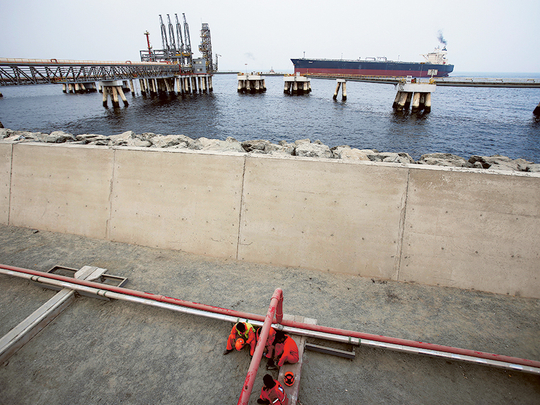
Dubai: Economic growth across the GCC is expected to remain subdued but steady in 2017 according for forecast by Emirates NBD’s Economic research team.
“Looking ahead to next year, we forecast average growth of 2.8 per cent in the GCC. We expect some acceleration in non-oil sector growth off this year’s low base, and as government budget strains ease on higher oil prices. While we do not project a significant increase in government spending next year, we don’t forecast further aggressive spending cuts in 2017 either,” said Khatija Haque, Head of MENA Research at Emirates NBD.
Higher oil revenues with the expected average oil price increase to $55 per barrel next year from $44 this year should help with narrowing budget deficits and reduce some of the liquidity strains in domestic banking systems that were evident in 2016.
“We continue to see the UAE as the best placed of the GCC economies in terms of its ability to withstand sustained lower oil prices. The economy is probably the most diversified in the region, the fiscal buffers are large and the budget is expected to be close to balanced next year,” said Haque.
The UAE GDP growth is expected to accelerate to 3.4 per cent next year from an estimated 3 per cent in 2016. Within the UAE, Dubai is expected to grow at a slightly faster rate than Abu Dhabi, given its infrastructure investment programme ahead of Expo 2020.
Economic growth in Saudi Arabia is forecast to pick up slightly next year, but likely to remain relatively modest overall at 1.8 per cent. Oil production is not projected to rise as much as it has this year, particularly if an agreement to limit Opec output is reached later this month. However, higher oil prices should alleviate some of the liquidity strains in the domestic banking system, as the government’s budget deficit and borrowing requirement is forecast to be much lower than in 2016.
While Qatar’s growth rate is expected to be the fastest in the GCC next year at over 5 per cent on the back of public sector infrastructure spending, the impact is visible on domestic banking system and liquidity. Public sector borrowing from commercial banks has increased 13 per cent in the year-to-September, while private sector borrowing is up just 4.4 per cent over the same period.
At the same time, public sector deposits at commercial banks have declined -14 per cent while private sector (residents’) deposits are down -0.5 per cent. Instead, Qatari banks have increasingly relied on non-resident deposits, and these have increased nearly 70 per cent between in the first nine months of the year. The share of non-resident deposits has increased to 18.6 per cent of total deposits so far in 2016, compared with just 6 per cent in 2014. With US interest rates set to rise further next year, these (typically more volatile) non-resident deposits are likely to become more expensive to retain.
Non-oil sector expansion appears to have slowed in both Saudi Arabia and the UAE at the start of the fourth quarter, after a relatively strong Q3. Saudi Arabia’s PMI declined to a series low of 53.2 in October on the back of slower output and new orders growth. The UAE’s headline PMI fell to a six-month low with new order growth relatively sluggish and external demand remaining weak. However both PMI surveys indicated a modest expansion in non-oil private sector activity in October.












